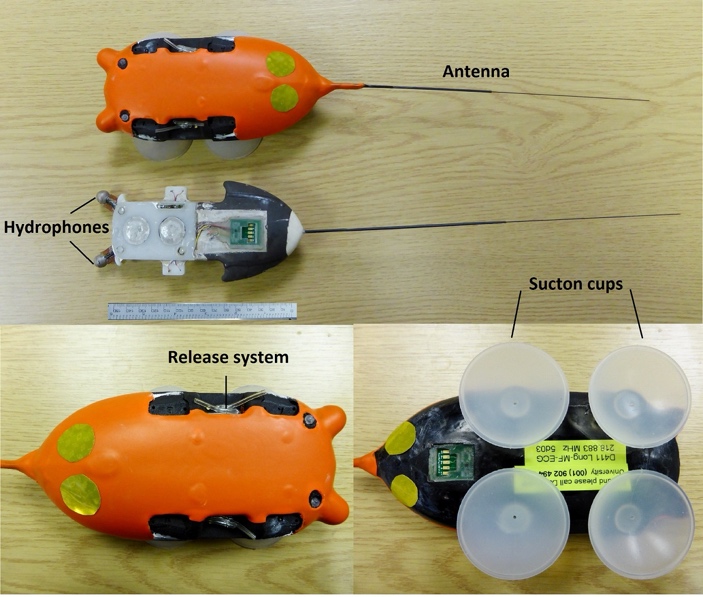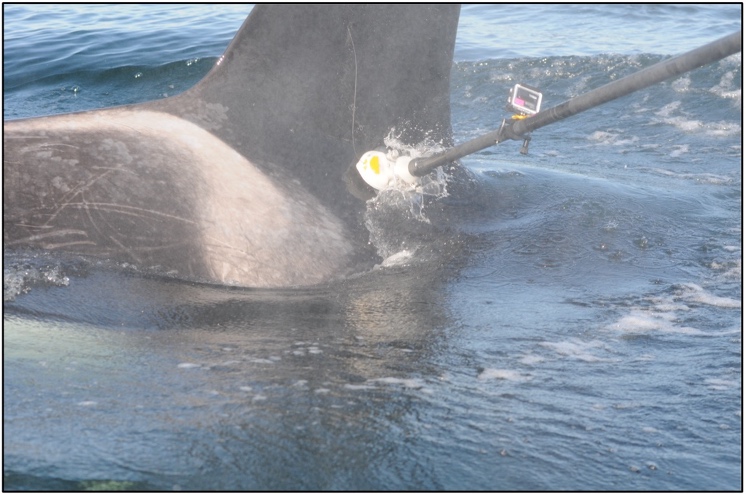Orca research


The Southern Resident killer whale (SRKW) population inhabits the coastal and inland waters between California and British Columbia. Estimates suggest the population may have historically fluctuated around 300 individuals. However, decades of harvest including for the live capture trade for aquariums and zoos around the world drastically reduced the population until the practice was ended in the mid-1960s. Prompted by steadily declining numbers, the SRKW was listed as Endangered under Canada’s Species at Risk Act in 2001 and under the United States Endangered Species Act in 2005. Despite protection measures implemented on both sides of the border and educational campaigns to promote awareness of SRKW status, the population has failed to recover. As of October 2023, there are 75 SRKW, nearly the smallest since the Center for Whale Research began conducting a population census over 45 years ago.

Figure 2. Dtags are non-invasive suction cup-attached sound and movement biologging tags developed by Peter Tyack and Mark Johnson at Woods Hole Oceanographic Institute.
Several key threats impairing SRKW recovery have been identified, particularly disturbance from vessels, exposure to toxicants, and reduced prey availability/accessibility. It is quite likely that combinations of these factors are involved in the recent population decline. For example, interference from vessel disturbance and noise may impede accessibility of scarce preferred prey, endangered Chinook salmon, causing metabolism of blubber to meet energetic needs, with the costly release of toxicants stored in blubber into the bloodstream. Additional outcomes of this compounding of factors may include nutritional impacts on pregnancy leading to reduced fecundity and recruitment in recent years. Moreover, inbreeding in this small population additionally impacts fitness. While it is difficult to tease apart the influence of each of these factors, mounting evidence indicates SRKW are in poor health overall. Aerial surveys have detected declines in body condition that point toward difficulty meeting metabolic needs, particularly in reproductive females, and reproductive failure is increasingly common among SRKW females.
The population’s downward trend, however, is not mirrored by the partially-overlapping Northern Resident killer whale population, which has grown at a rate of approximately 2-3% per year during the same period (Fig. 1).

Figure 3. Dtag being deployed by carbon fiber pole on an individual from the SRKW population.
Our research on killer whales attempts to understand the causes of the divergent population growth trajectories between SRKW and NRKW. To achieve this, we use multi-sensor sound and movement bio-logging tags (“Dtags”, Figs. 2, 3) temporarily & non-invasively attached by suction cup to killer whales to understand what the whales do when they dive out of sight (Fig. 4) and how social and environmental factors may impact behavior. We collaborate on projects led by NOAA Fisheries’ Northwest Fisheries Science Center, with colleagues from Fisheries & Oceans Canada, Killer Whale Tales, and The Whale Museum.
Note: All photos taken under U.S. permits #781-1824, #16163